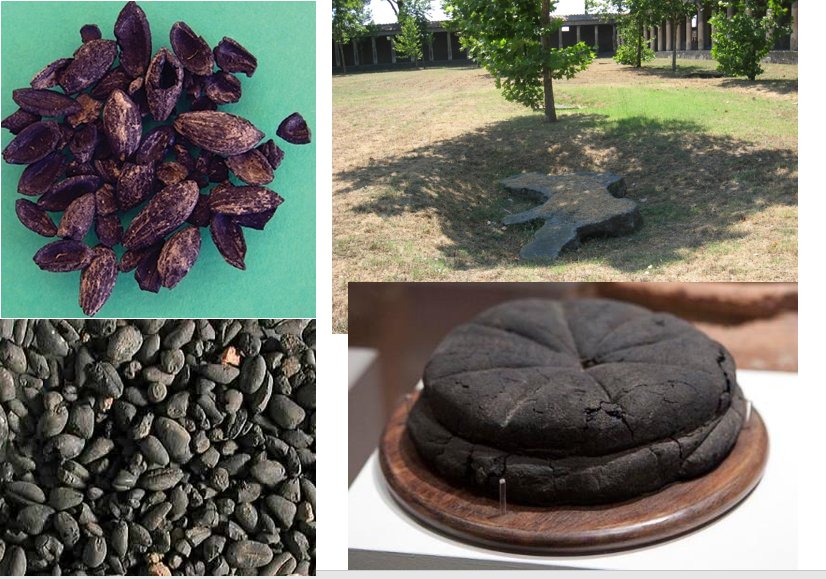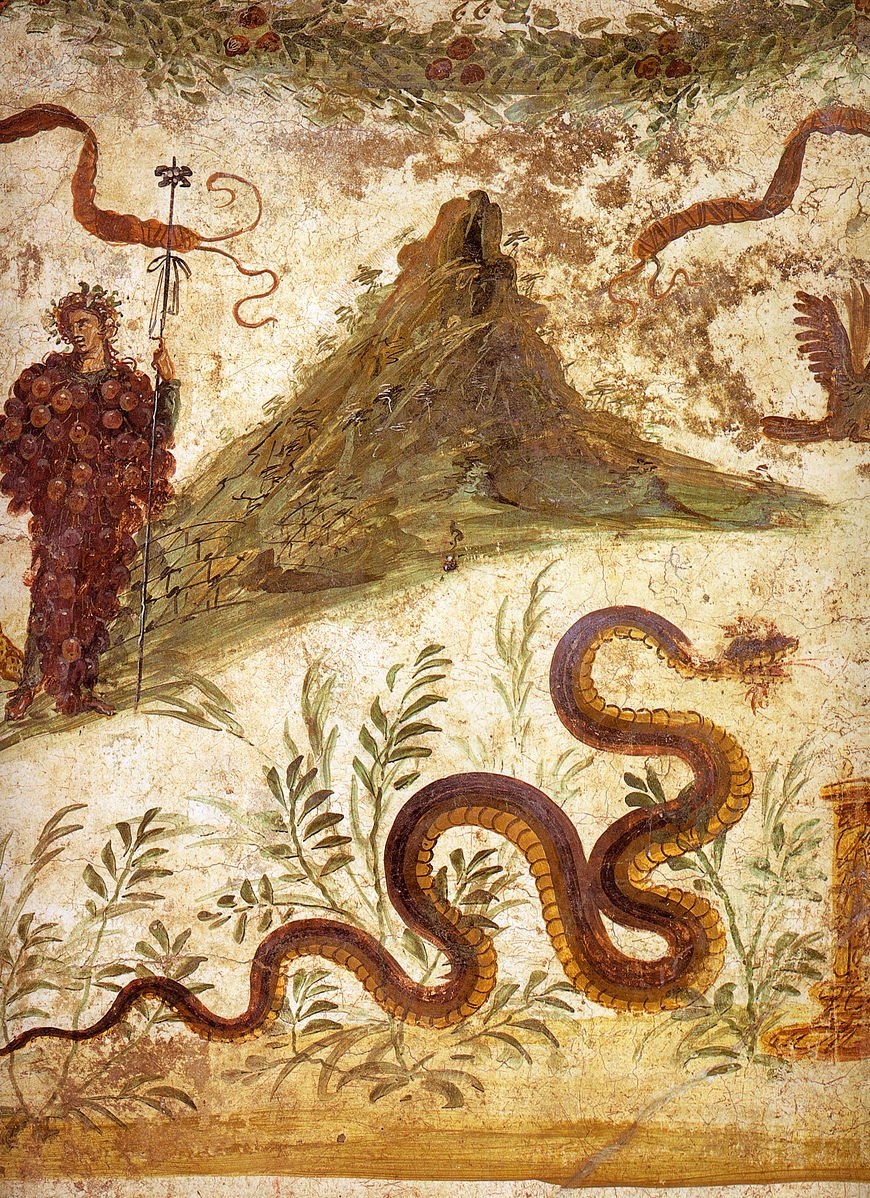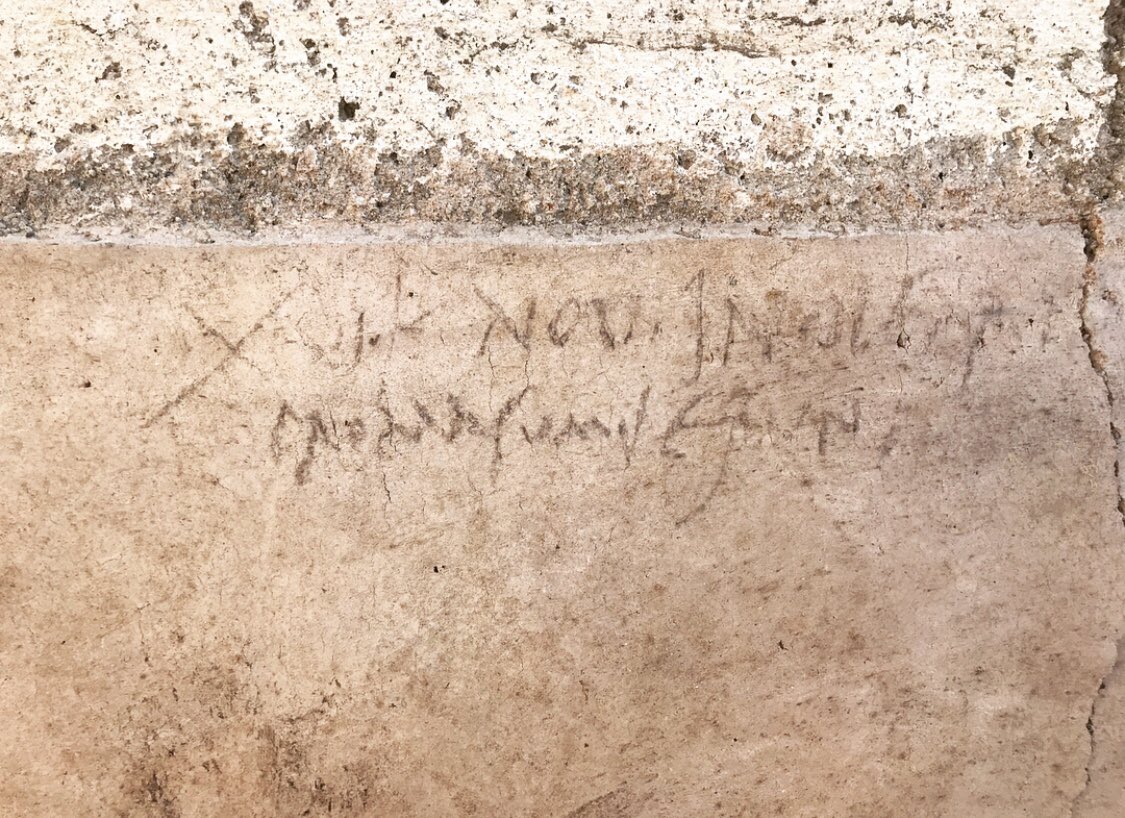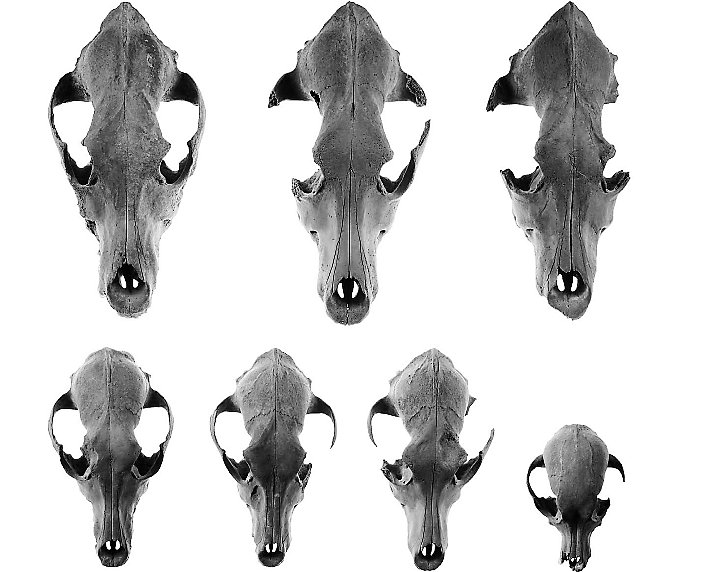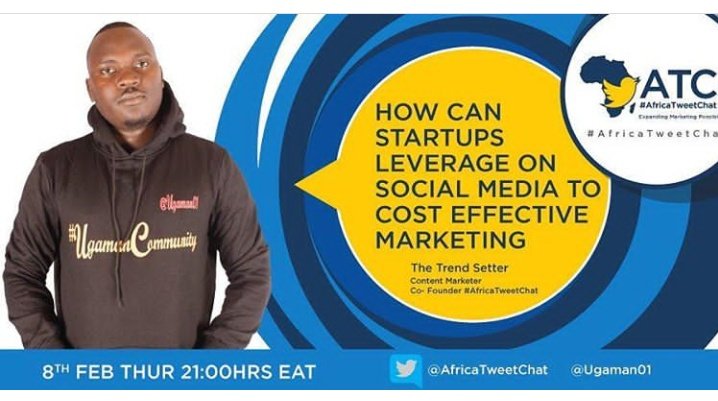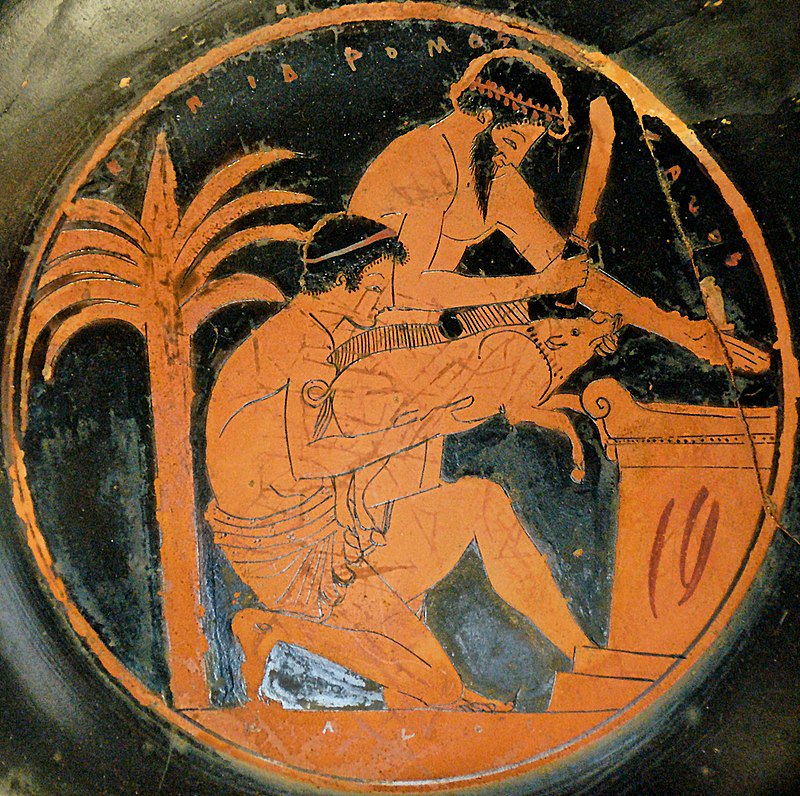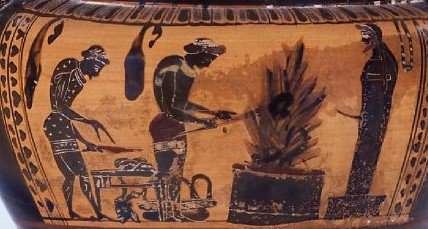This is my 1st thread highlighting how animal bones can answer important questions in the ancient Mediterranean
#Zooarchaeology is often thought of as a niche study, but it relates to traditional forms of evidence
#scicomm #humanities
/1
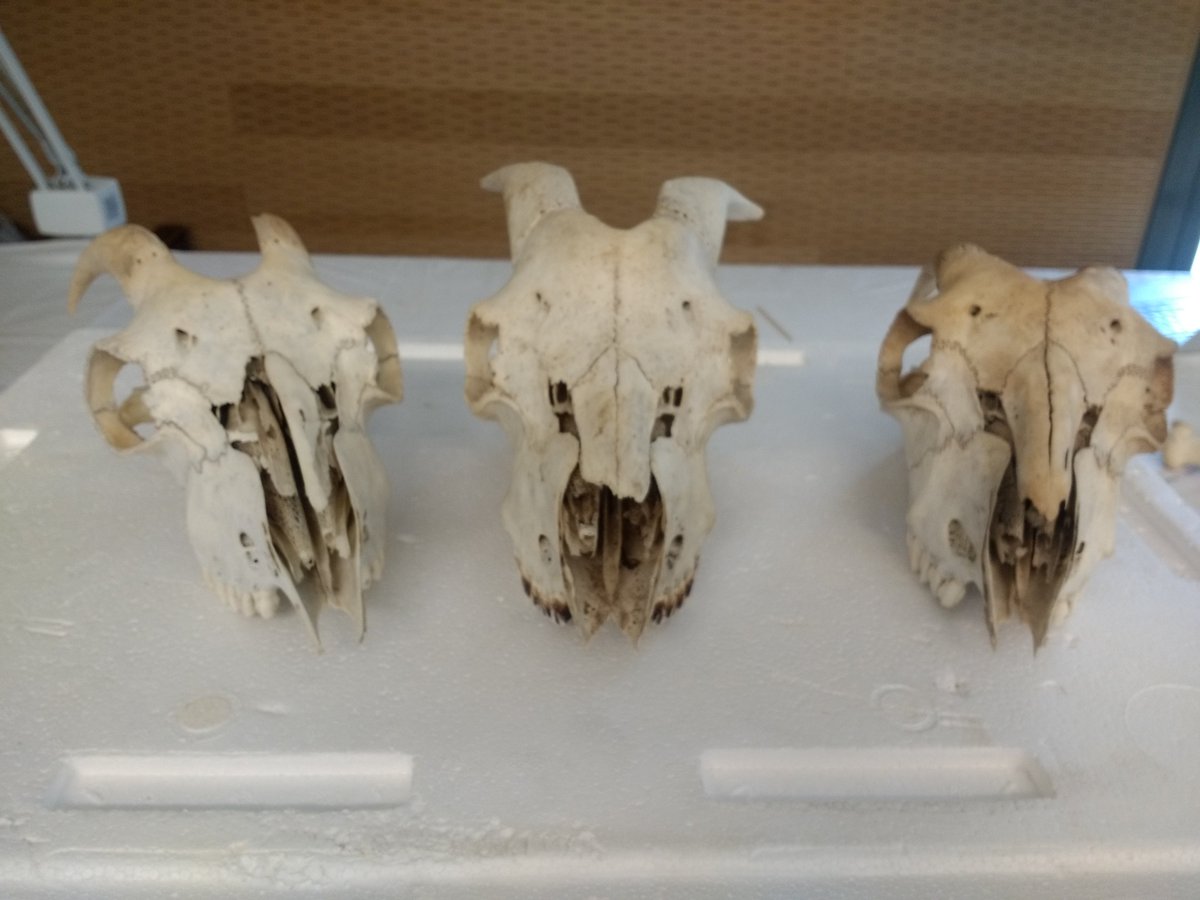
For example, according to the TLG the lemma hippos (horse) is the 13th most common term in Homer’s Iliad (417 mentions). Horses were important to epic warfare
/2
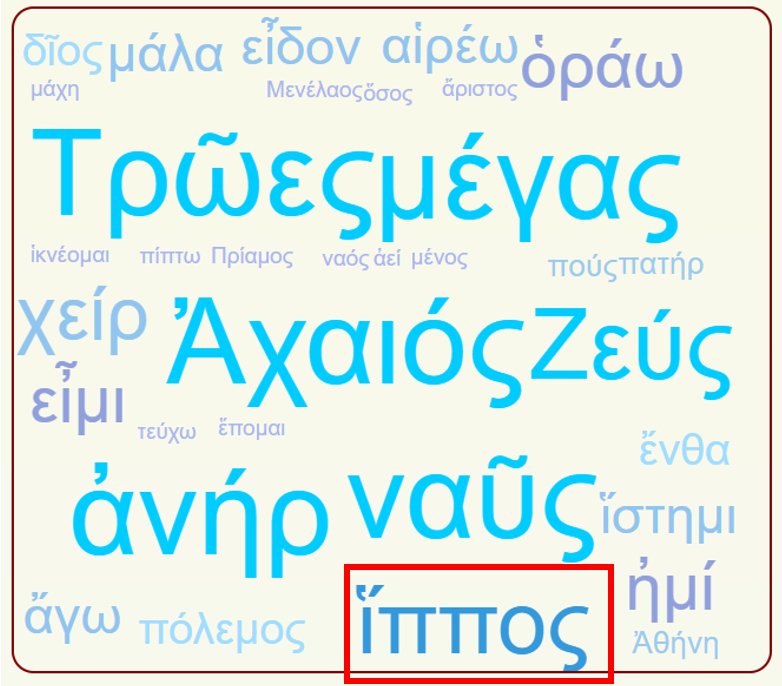
But texts don’t tell the whole picture about #AncientAnimals
Pigs are only mentioned once in Hesiod: boars should be castrated on the 8th day of the month (WD 790)
/3
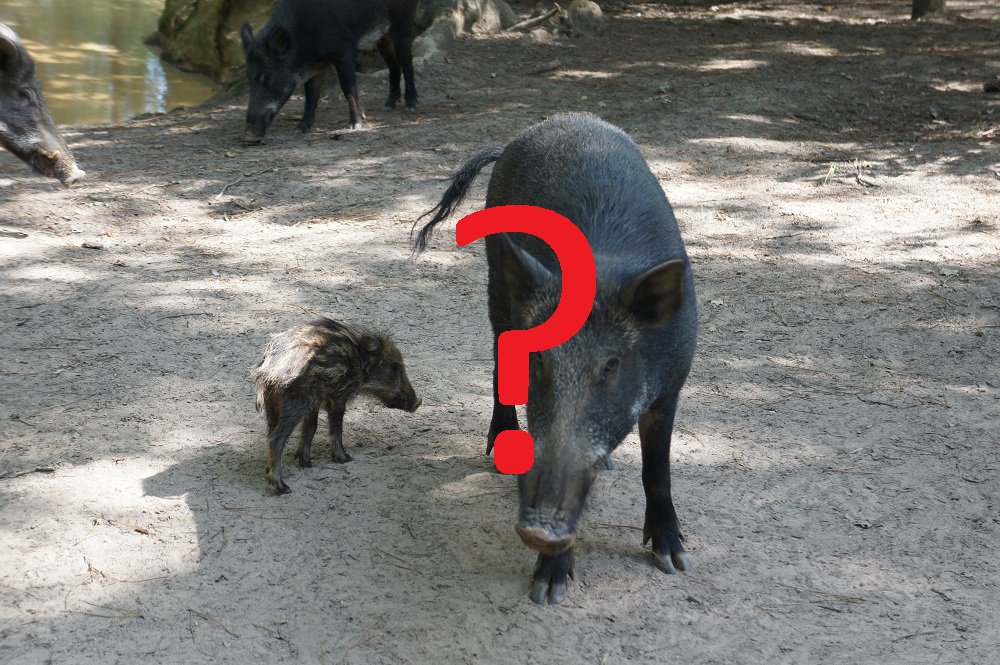
Yet, every major faunal assemblage I’ve studied has at least one example of a butchered dog
The butchered jawbone here is from Crete
/4
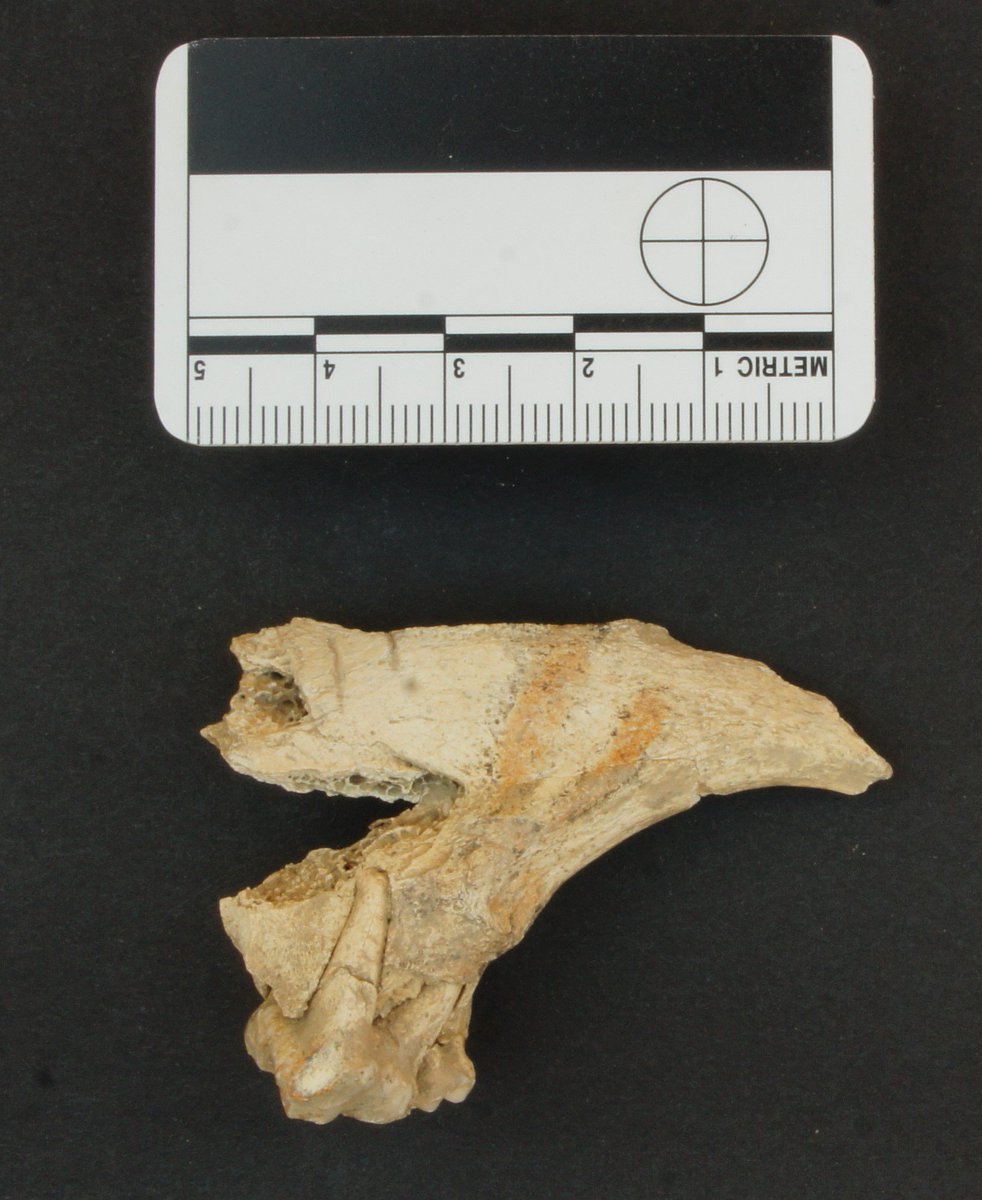
We should not read these as photographs depicting the literal past
After all, #BlueMonkeys and mythical species are not real!
/5
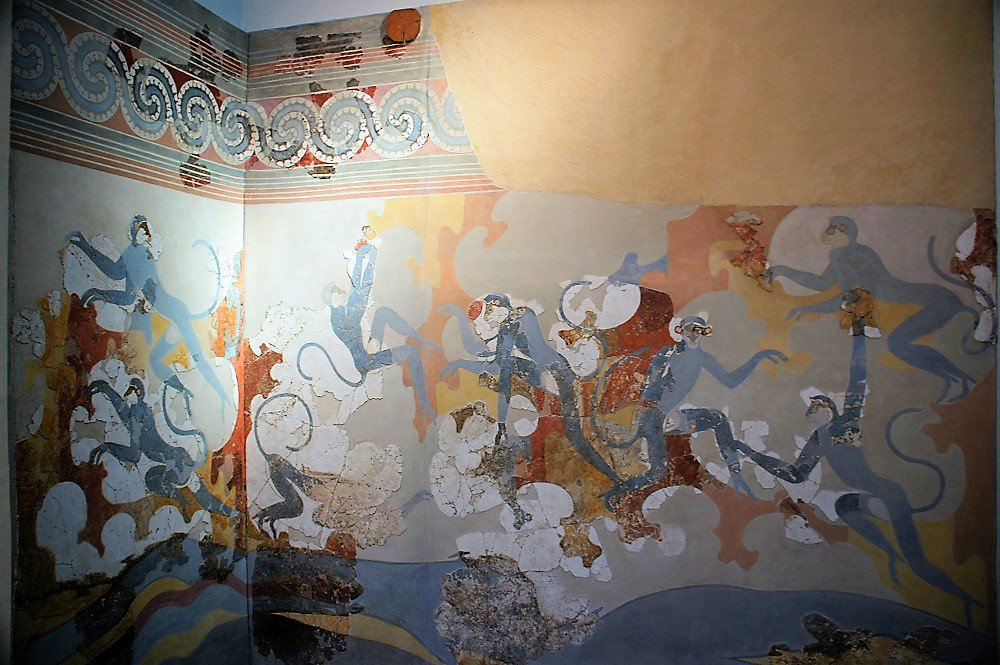
Notice the hooves, identifying them as legs?
Their floppy nature might make them deboned thighs
/6

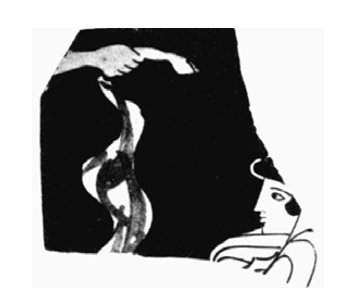
Most texts specify the burning of fat-wrapped thigh bones, but most images depict a curling tail on an altar
The curl is a sign of good luck
Experiments show the tail (almost) always curls…
/7

Thighs & tails are commonly burned but so are other elements From heads or horns to lower legs to jawbones and forelimbs
Different sites at different times show different patterns
/8
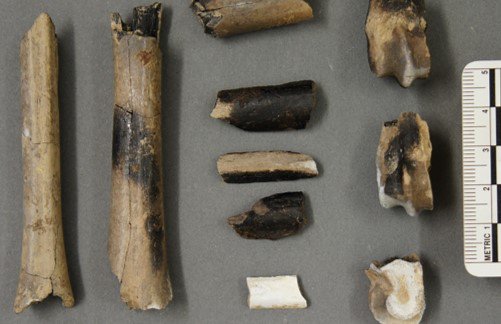
Not only do we find finished products but also workshop refuse, adding to our understanding of ancient crafts
#Boneworking is similar to woodworking but bone survives more often
/9
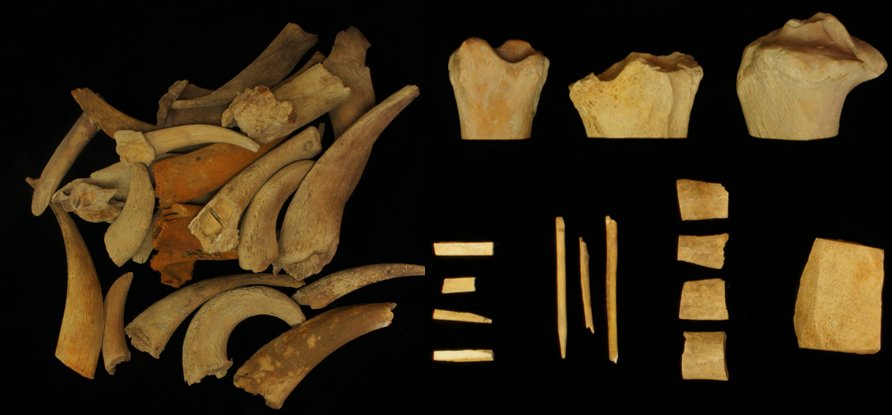
Example: the recently discovered horse burials from the cemetery at Phaleron
/10

They aren’t pretty, but are really interesting
They tell a lot about food and even trash disposal
/11
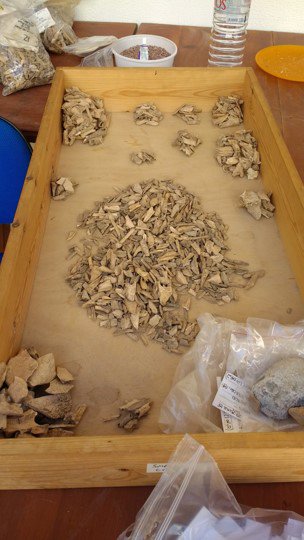
All bones and no play...
/12
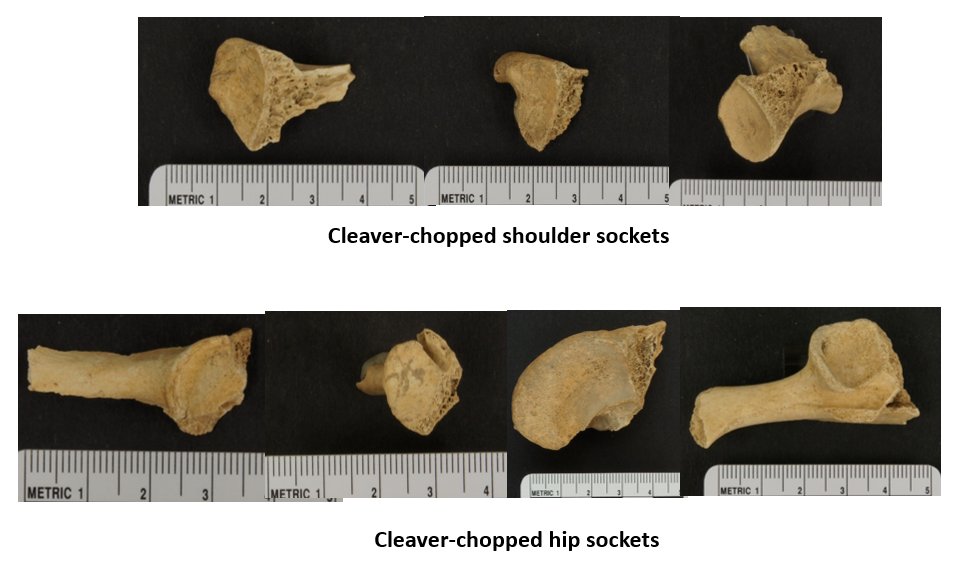
I’ll delve deeper into many topics, including my research & Postdoc project on zooarch of #Azoria at the #WienerLab of @ASCSAthens
If you have questions, ask!
And please share!
#scicomm #humanities #ClassicsTwitter #ZooarchTwitter
/end

/1 Goat skulls from the #WienerLab @ASCSAthens
/2 Iliad word cloud from the Thesaurus Linguae Graecae
/3 Pigs from a French sanglier farm
/4 For more on butchered dog see L Snyder & W Klippel “From Lerna to Kastro: Further Thoughts on Dogs as Food in Ancient Greece”
/5 Blue monkey fresco from Akrotiri, Thira Museum
/6 Deboned hindlimbs from V. Tsoukala “Honorary Shares of Sacrificial Meat in Attic Vase Painting” @ascsapubs
/7 Curling tail from G. Ekroth “Thighs or Tails? The Osteological Evidence as a Source for Greek Ritual Norms”
/8 Burned & articulating goat ankle
/9 Worked bone ornament & refuse
/10 For more on Phaleron cemetery see phaleron.digital-ascsa.org
/11 Lots o’ bones in this bag
/12 Cleaver chopped shoulder and hip joints
*All unattributed photos by Joni Martini (my wife) or me

